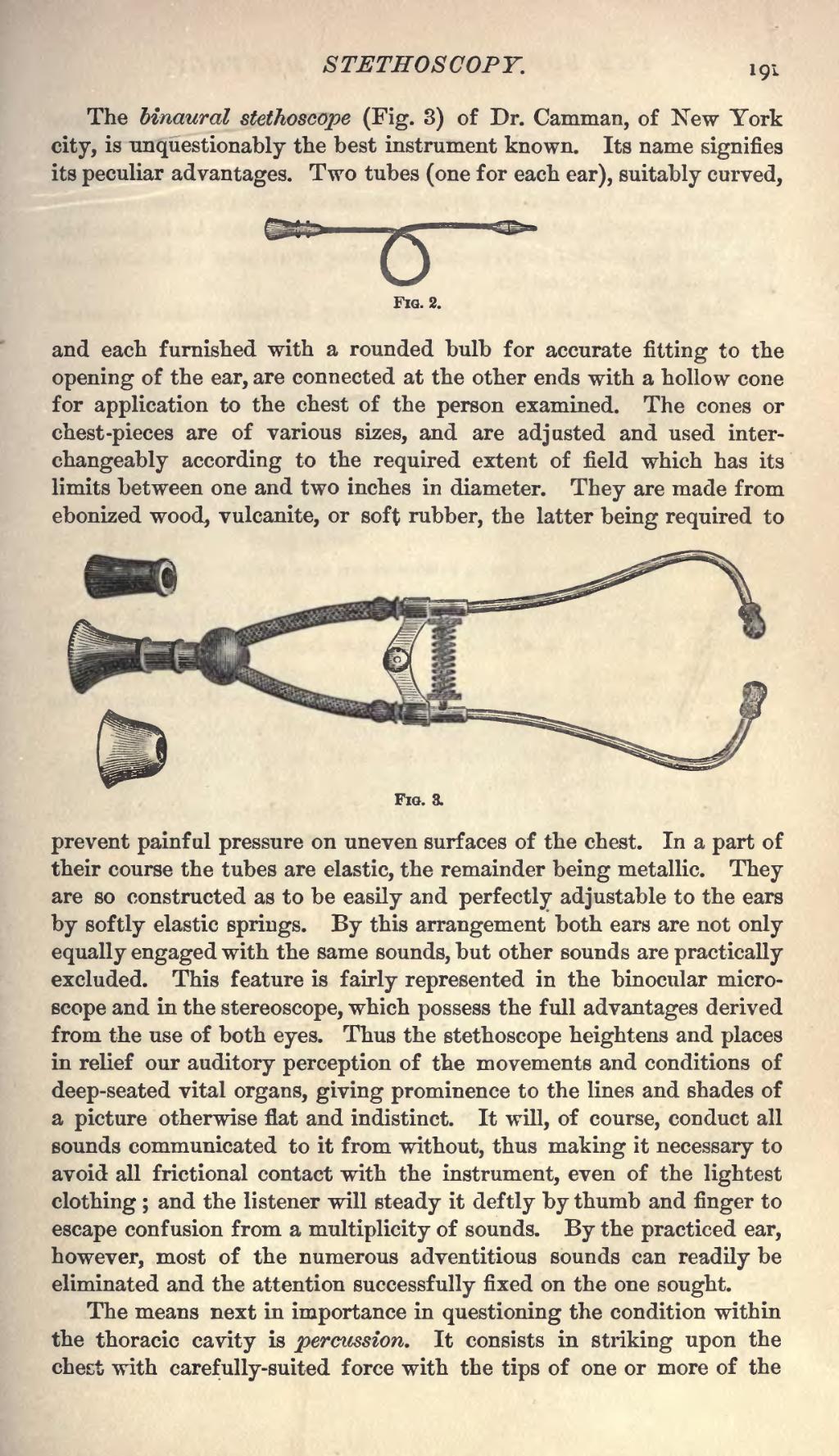The binaural stethoscope (Fig. 3) of Dr. Camman, of New York city, is unquestionably the best instrument known. Its name signifies its peculiar advantages. Two tubes (one for each ear), suitably curved,

Fig. 2.
and each furnished with a rounded bulb for accurate fitting to the opening of the ear, are connected at the other ends with a hollow cone for application to the chest of the person examined. The cones or chest-pieces are of various sizes, and are adjusted and used interchangeably according to the required extent of field which has its limits between one and two inches in diameter. They are made from ebonized wood, vulcanite, or soft rubber, the latter being required to

Fig. 3.
prevent painful pressure on uneven surfaces of the chest. In a part of their course the tubes are elastic, the remainder being metallic. They are so constructed as to be easily and perfectly adjustable to the ears by softly elastic springs. By this arrangement both ears are not only equally engaged with the same sounds, but other sounds are practically excluded. This feature is fairly represented in the binocular microscope and in the stereoscope, which possess the full advantages derived from the use of both eyes. Thus the stethoscope heightens and places in relief our auditory perception of the movements and conditions of deep-seated vital organs, giving prominence to the lines and shades of a picture otherwise flat and indistinct. It will, of course, conduct all sounds communicated to it from without, thus making it necessary to avoid all frictional contact with the instrument, even of the lightest clothing; and the listener will steady it deftly by thumb and finger to escape confusion from a multiplicity of sounds. By the practiced ear, however, most of the numerous adventitious sounds can readily be eliminated and the attention successfully fixed on the one sought.
The means next in importance in questioning the condition within the thoracic cavity is percussion. It consists in striking upon the chest with carefully-suited force with the tips of one or more of the

